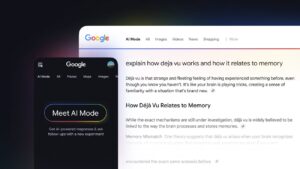DeepMind Announces Plans to Utilize AI Models for Physical Robots

Google’s DeepMind: Integrating AI Models into Physical Robots
Introduction to DeepMind’s Vision
Google’s DeepMind, a leader in artificial intelligence research, is making exciting strides in the field of robotics. They have announced plans to incorporate advanced AI models into physical robots. By doing so, the company aims to enhance the capabilities of robots, making them smarter and more efficient in performing various tasks.
The Role of AI in Robotics
Understanding AI Models
AI models are algorithms designed to perform specific tasks by learning from data. These models can analyze vast amounts of information and make decisions based on patterns. When applied to robotics, they enable machines to interpret their environment, make real-time decisions, and improve their functioning over time.
Enhancing Robot Capabilities
DeepMind’s initiative is focused on enhancing the intelligence and practicality of robots. Here are some key areas where AI can significantly improve robotics:
Autonomy: AI models allow robots to operate independently, making them suitable for tasks that require minimal human intervention.
Adaptability: Robots powered by AI can quickly learn and adapt to new environments or challenges. This flexibility is essential for tasks that vary frequently.
Decision-Making: Advanced AI models equip robots with the ability to make informed decisions based on real-time data, thus increasing their efficiency.
- Collaboration: AI-enhanced robots can work alongside humans, understanding and responding to human actions and intentions more effectively.
DeepMind’s Current Projects
Focus Areas
DeepMind’s research isn’t limited to one particular type of robot; they are exploring multiple domains. Here are a few notable areas of focus:
Healthcare Robotics: Robots can assist in medical scenarios, such as in surgeries or patient care. By utilizing AI, robots can help doctors with precision tasks.
Industrial Robots: In manufacturing environments, AI can improve the processing and assembly tasks performed by robots, making them faster and more accurate.
- Exploration Robotics: Robots designed for exploration can benefit from AI models that help them navigate difficult terrains or environments safely.
Real-World Applications
DeepMind aims to demonstrate the practical applications of their AI technologies. Some real-world projects might include:
Delivery Robots: Robots that can navigate urban environments to deliver packages autonomously.
Service Robots: AI-driven robots that provide customer service in retail settings, efficiently assisting customers with their needs.
- Search and Rescue Missions: Robots equipped with AI can locate victims in disaster scenarios, providing vital information to rescue teams.
Challenges and Considerations
Ethical Considerations
As with any technology, the integration of AI into physical robots raises ethical questions. Key issues include:
Job Displacement: Automation through robotics could threaten jobs in certain sectors, prompting a need for reskilling workers.
- Data Privacy: AI robots require data to learn, which raises concerns about how personal and sensitive information is used and protected.
Technical Challenges
Developing effective AI models for robotics presents technical difficulties:
Algorithm Complexity: Crafting algorithms that enable reliable decision-making in unpredictable environments is a significant challenge.
- Hardware Limitations: Building robots that can physically operate and perform tasks as expected while integrating advanced AI is a complex undertaking.
The Future of AI in Robotics
DeepMind’s advancements in integrating AI with physical robots signal promising developments in this field. As they continue to innovate, the potential for smarter, more effective robots becomes increasingly tangible. This shift can lead to remarkable changes across various industries, transforming how tasks are performed and how robots interact with the world around them.
With ongoing research and development, the future holds exciting possibilities for AI-powered robotics, paving the way for a new era in automated assistance and efficiency.






